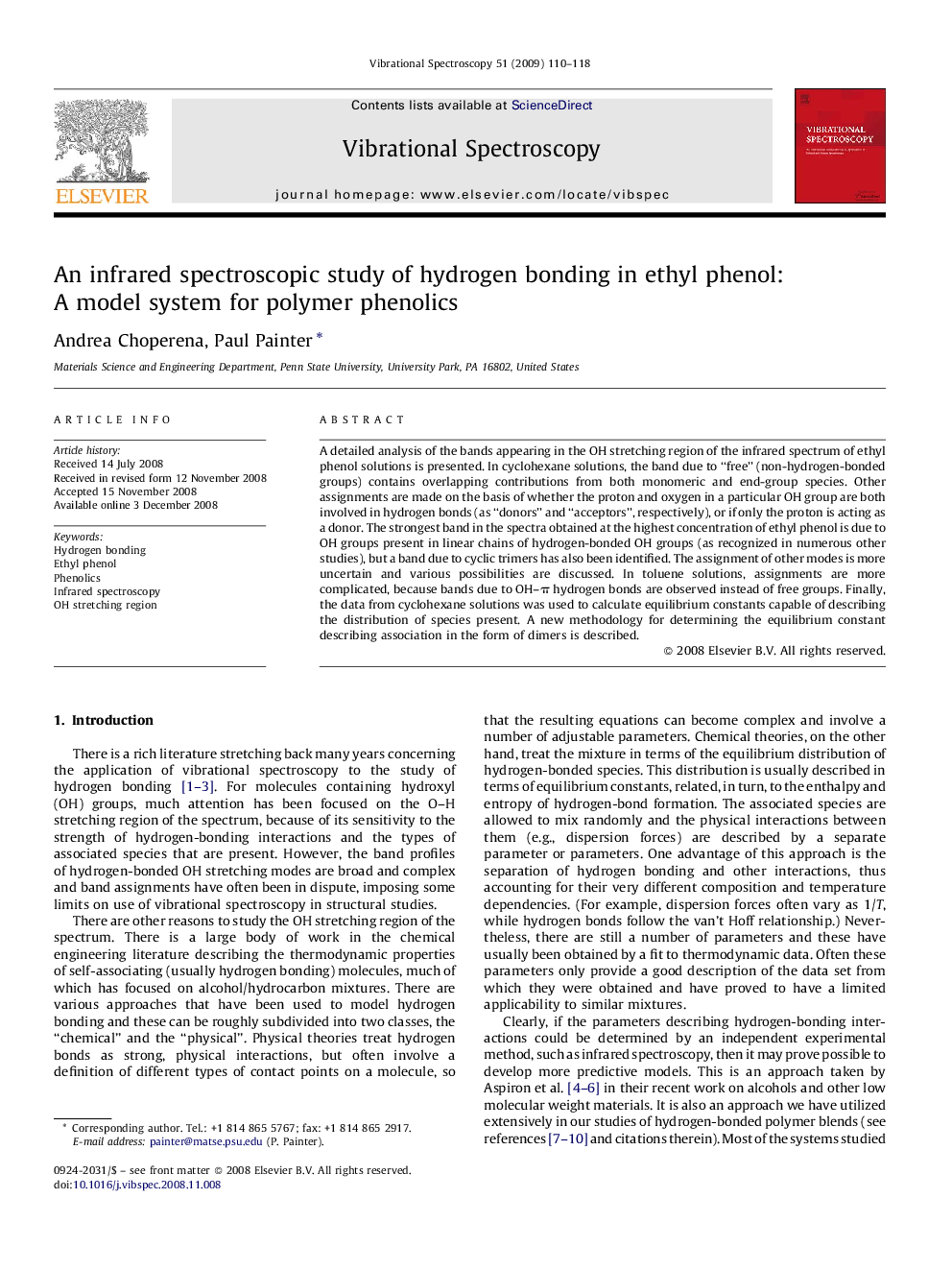| Article ID | Journal | Published Year | Pages | File Type |
|---|---|---|---|---|
| 1250026 | Vibrational Spectroscopy | 2009 | 9 Pages |
A detailed analysis of the bands appearing in the OH stretching region of the infrared spectrum of ethyl phenol solutions is presented. In cyclohexane solutions, the band due to “free” (non-hydrogen-bonded groups) contains overlapping contributions from both monomeric and end-group species. Other assignments are made on the basis of whether the proton and oxygen in a particular OH group are both involved in hydrogen bonds (as “donors” and “acceptors”, respectively), or if only the proton is acting as a donor. The strongest band in the spectra obtained at the highest concentration of ethyl phenol is due to OH groups present in linear chains of hydrogen-bonded OH groups (as recognized in numerous other studies), but a band due to cyclic trimers has also been identified. The assignment of other modes is more uncertain and various possibilities are discussed. In toluene solutions, assignments are more complicated, because bands due to OH–π hydrogen bonds are observed instead of free groups. Finally, the data from cyclohexane solutions was used to calculate equilibrium constants capable of describing the distribution of species present. A new methodology for determining the equilibrium constant describing association in the form of dimers is described.
